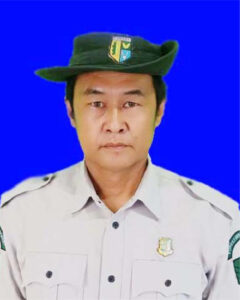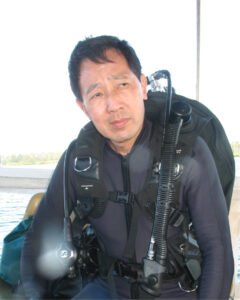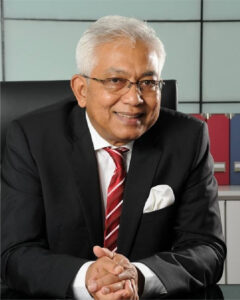Local forester dedicates to protecting Inlay Lake Wildlife Sanctuary
Amid the beauty and stillness of Inlay Lake nestled in Eastern Myanmar, Mr. Nay Win Swe is a familiar figure, often seen moving gingerly across the water as he monitors hundreds of bird species found around the area.
Just like these birds, Mr. Swe has called this unique and iconic wetland his home, having been born and raised in a village at Nyaung Shwe town which straddles the Inlay Lake. He is a native Intha – which literally translates to “sons of lake” – referring to the indigenous group of people famous for their traditional one-leg rowing technique.
Strategically situated in the Shan plateau of Myanmar at 881 meters above sea level, Inlay Lake is the second largest lake in the country, covering 64,200 hectares. In 1985, it was established as a wildlife sanctuary to protect the natural vegetation, geological features, and unique species in the area. Eighteen years later, in 2003, the Inlay Lake Wildlife Sanctuary was designated as one of the ASEAN Heritage Parks, which are protected areas of high conservation importance, preserving in total a complete spectrum of representative ecosystems of the region. Inlay Lake is also the first site in Myanmar to be included in the UNESCO-backed “World Network of Biosphere Reserves.”
Having lived close to the lake his whole life, Mr. Swe recognizes its importance to thousands of locals who rely on it for water, food, electricity, and livelihood, as well as to nearly 3,000 diverse species of flora and fauna inhabiting the freshwater wetland. As such, for nearly three decades, he has devoted his time, knowledge, and skills to do his part in protecting and conserving the Inlay Lake Wildlife Sanctuary’s valuable biodiversity.
Since 1995, Mr. Swe has worn several hats in the course of his profession as a forester. As a native Intha, he successfully engages the locals especially when it comes to awareness-raising and patrolling activities. Backed by the residents’ trust and affinity with him, along with his excellent interpersonal and communication skills, Mr. Swe manages to connect the residents with the sanctuary and make them appreciate the decisions made or actions taken for the benefit of all. For instance, he has made them understand how investments are needed to address increasing tourism arrivals, as well as to mitigate and adapt to climate change. In addition, he can effectively address conservation issues or conflicts that arise within the community. In one incident, he has led negotiations among some locals who initially opposed the installment of pillars to demarcate the boundary of the sanctuary, as they feared that the pillars would fall and damage their properties and agricultural lands. Following productive discussions, they amicably settled the dispute, leading to the project’s accomplishment.
With his rich personal history and extensive knowledge of the Inlay Lake Wildlife Sanctuary, Mr. Swe has also been a strong driving force in various conservation activities. He is at the forefront of the implementation of the 10-year Re-establishing Natural Habitats Program, as well as the 10-year work plan of Inlay Lake watershed areas conservation project. Mr. Swe successfully juggles his roles as the team leader of two patrolling teams at the sanctuary, in addition to conserving breeding grounds for birds and actively leading the collection of biodiversity data needed for the development of the sanctuary’s management plan.
Moreover, people at the sanctuary attest to his outstanding skills and proficiency in bird watching. In fact, Mr. Swe has found a new record of a migratory bird (Ruddy Turnstone) and three new species of resident forest birds, which have never been recorded at the Inlay Lake Wildlife Sanctuary. Demonstrating his appreciation for the wetland’s feathered friends, Mr. Swe also generously passes on his knowledge by providing bird watching trainings to the sanctuary’s junior staff and even to locals who are interested in the activity.
Not one to forget where he came from, Mr. Swe actively participates in a number of activities in his hometown, Nyaung Shwe, such as conducting training for local tour guides, as well as camping for environmental conservation in and around of the Inlay Lake.
Mr. Swe’s love for the Inlay Lake Wildlife Sanctuary seems to know no bounds, exemplified by his actions and contributions that go beyond his primary duties as a forester. From carrying out protected area management and biodiversity conservation activities, to using his analytical skills to diagnose problems and develop viable solutions for the sanctuary, to helping out in any way he can – even down to repairing the engine of boats which are essential for their activities – Mr. Swe spends every waking moment to carry out his role as the protector of the sanctuary, as well as his fellow lake dwellers.


























